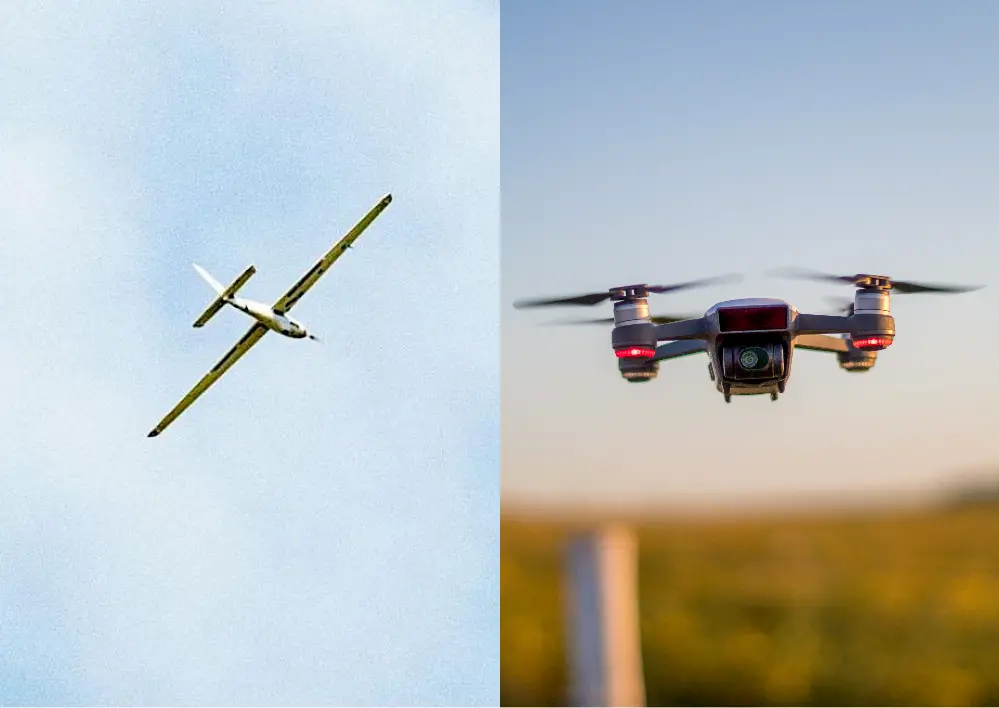Understand all kinds of Drones
The word “drone” has become synonymous with the small helicopter-like devices flown by hobbyists around the world. But, it’s puzzling for many when this term also refers to a high-tech battlefield weapon costing millions. Should a child’s $30 toy and a $10 million piece of advanced machinery share the same name?
There’s a realm of terminology surrounding these flying gadgets: every UAV (Unmanned Aerial Vehicle) is a drone, but the reverse isn’t always true. As drones gain traction, we can expect the FAA and other bodies to provide more precise definitions. Until then, the plethora of terms used to describe these devices can indeed be baffling. In this article, we’ll demystify these terms, shedding light on their differences and similarities.

Drone
The term “drone” conventionally refers to an unmanned aerial vehicle capable of autonomous operation, devoid of human control. Yet, this definition extends beyond aerial mechanics. The nomenclature can also encompass autonomous maritime vessels, such as submarines, and terrestrial vehicles. While the predominant interpretation aligns with remotely-operated aircraft, the consensus in specialized circles emphasizes the absence of an onboard pilot as a defining characteristic. It’s noteworthy that the etymology of “drone” is attributed to the Havilland DH82B “Queen Bee,” a remotely controlled aircraft developed over eight decades ago.
UAV
A UAV, or Unmanned Aerial Vehicle, signifies a device capable of remote operation, typically through controllers or tablets, and also of autonomous flight. While the terms “UAV” and “drone” are frequently used interchangeably, distinctions arise in specialized contexts. Industry professionals often stipulate that for a device to qualify as a UAV, it must possess autonomous flight capabilities, a criterion not universally required for drones. Consequently, while all UAVs can be classified as drones, the inverse may not always hold true.
UAS
A UAS, or Unmanned Aircraft System, encompasses a holistic operational framework. It not only comprises the UAV (Unmanned Aerial Vehicle) or drone itself but also integrates the ground-based operator and the communication system linking them. Thus, while the UAV signifies the airborne component, the UAS represents a comprehensive system, encapsulating both the aircraft and its control mechanisms.
RPA
The term “Remotely Piloted Aircraft” (RPA) is favored by many aviation professionals, reflecting the intricate skills and extensive training necessary to operate certain UAVs. These aircraft demand more than rudimentary handheld controls; for instance, the cockpit of a Global Hawk bears resemblance to a commercial airliner. While currently, RPA and UAV are largely used interchangeably, the distinction underscores the specialized piloting expertise required for the former.
Terms habit in different country
Here is a small list to give you a general idea of which countries use which terms most often:
- French speaking countries: drones
- United States and United Kingdom: UAS
- Other National Aviation Agencies: RPAS
- Media on the Internet: UAV and drones
More related terms of Drones
Here are 10 popular synonyms for unmanned systems you may have heard of:
- UA: Unmanned aircraft can be used interchangeably with all other aerial drones as it refers specifically to flying vehicles
- AUV: Autonomous Underwater Vehicle
- UUV: Unmanned Underwater Vehicle
- ROV: Remotely Operated Vehicle, ROVs are often used to describe an underwater drone. This term however can be used to describe all types of drones
- ROUV: Remotely Operated Underwater Vehicle
- RPA: Remotely Piloted Aircraft, RPA and UAV have the same meaning essentially. They are both used to describe unmanned aircraft. These two terms differentiate from the term drone as they are often used to describe remotely piloted aircraft that may require more experience to fly
- RPAS: Remotely Piloted Aircraft System, RPAS refer to the system that makes up a RPA
- UGV: Unmanned Ground Vehicle, UGVs refer to all drones that can only be used on the ground
- UCAV: Unmanned Combat Aerial Vehicle, This refers secifically to aerial drones used for combat purposes
- UAVS: Unmanned Aerial Vehicle System, UAVS refer to the system that makes up a UAV
Summary
The nuanced differences between the terminologies, while seemingly subtle, play pivotal roles in delineating distinct aspects of drone technology. As the drone landscape evolves, the lexicon is bound to expand and adapt, introducing terms that facilitate more precise discussions. Currently, the terms elucidated above serve as the foundational vocabulary, aiding in accurate identification and understanding of the myriad drone variations encountered in daily life.